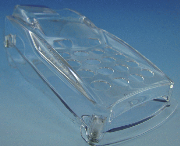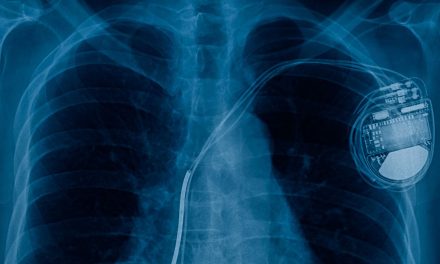 Star Prototype has recently developed prototypes for a modular penknife, a hand-held hard skin remover and a biometric door access solution at its state-of-the-art facilities in the Guangdong Province of China. The company’s British owner and MD, Gordon Styles, talks to Design Solutions about the art and industry of rapid prototyping
Star Prototype has recently developed prototypes for a modular penknife, a hand-held hard skin remover and a biometric door access solution at its state-of-the-art facilities in the Guangdong Province of China. The company’s British owner and MD, Gordon Styles, talks to Design Solutions about the art and industry of rapid prototyping
When you look at new product development, whatever the field and whatever the type of product, there is always one common denominator that links them together: the prototype.
The importance of the prototype cannot be underestimated. It puts the closest possible approximation of the final product in the hands of the designers before it goes into production, giving them the chance to iron out any flaws long before they have the chance of turning into expensive mistakes.
 Companies like Star Prototype aim to deliver a prototype that is as close to the production specification as possible. Any significant deviation from the intended end product can be counterproductive, both in terms of the product design process and for the prototyping company involved. If that wasn’t enough pressure, the industry is further complicated by the fact that the prototype could be for virtually anything.
Companies like Star Prototype aim to deliver a prototype that is as close to the production specification as possible. Any significant deviation from the intended end product can be counterproductive, both in terms of the product design process and for the prototyping company involved. If that wasn’t enough pressure, the industry is further complicated by the fact that the prototype could be for virtually anything.
As a result, the more strings a company can have in its bow the more likely it is to achieve across-the-board success. Our service, for example, currently covers everything from Stereolithography (SLA) and Selective Laser Sintering (SLS) through to CNC machining, polyurethane casting and even the highly dangerous process of vapour polishing. All of this is aimed at one thing – having the flexibility to successfully handle everything that is thrown our way.
Pre-production challenges
We were recently tasked with the job of delivering pre-production prototypes of Scholl’s 2-in-1 hard skin remover by the Warwickshire-based design agency, DCA Design International.
 The biggest challenge was the creation of a plastic tube that served as the handgrip for the product, which was its largest individual part. Plastic tubes have to be moulded around a metal core, and the plastic always shrinks onto it. The only way of avoiding this is to have a hydraulic cylinder on the side of the tool to pull it out. This practice, although common in final production, is not normally associated with the prototype process on the basis it is generally seen as too demanding and time consuming. We felt the designer was better served getting the real thing and so followed final production protocol.
The biggest challenge was the creation of a plastic tube that served as the handgrip for the product, which was its largest individual part. Plastic tubes have to be moulded around a metal core, and the plastic always shrinks onto it. The only way of avoiding this is to have a hydraulic cylinder on the side of the tool to pull it out. This practice, although common in final production, is not normally associated with the prototype process on the basis it is generally seen as too demanding and time consuming. We felt the designer was better served getting the real thing and so followed final production protocol.
‘The importance of the prototype cannot be underestimated. It puts the closest possible approximation of the final product in the hands of the designers before it goes into production, giving them the chance to iron out any flaws long before they have the chance of turning into expensive mistakes’
Switch, meanwhile, is a modular pocket knife produced by social development company, Quirky. It features 18 different tool and blade attachments, three interior axle assemblies, two exterior body covers, and two slotted caps to hold it together. It was developed to allow users to mix and match different tools to create their own personalised pocket knife solution.
We produced an ‘A’ class visual model of the knife in just 13 days, which featured an outer case that was machined from 304 stainless steel and cut on a CNC machine, and blades and tools that were made out of 400 series stainless steel.
In another application we were asked to create a range of clear covers for a new hand held point of sale terminal for Muller Commercial Solutions (MCS). We opted to produce the prototype from a polycarbonate as opposed to using acrylic, which is generally favoured. Polycarbonates are far stronger than acrylic, so produce a far better quality prototype – especially when used in conjunction with vapour polishing, which ensures an impressively clear finish.
Meanwhile, to produce a functional and photorealistic prototype of a finger vein biometric door access solution for a Canadian company, we relied upon our extensive range of services to deliver the ideal solution. The client provided us with a specification of what was required and the materials they wanted to use, and we then sat down and developed a solution that we felt best suited their requirements. The final prototype was produced using vacuum casting, CNC machined plastic and sheet metal, silk screening, vapour polishing, painting and engraving.
Delivering the best solution
Although these examples highlight different products and the different solutions we utilised to deliver them, they all provided the designers with the same benefits. The chance to take their new product from the drawing-board and hold it in their hands; the chance to touch it, feel it and explore it; and the chance to see what works and what doesn’t.
In all instances, the better the prototype the more the designer will be able to take from it. Therefore, it is imperative that we, and those we compete with, concentrate on delivering the very best solutions every time.
Star Prototype
T: +86 138 2272 8700


